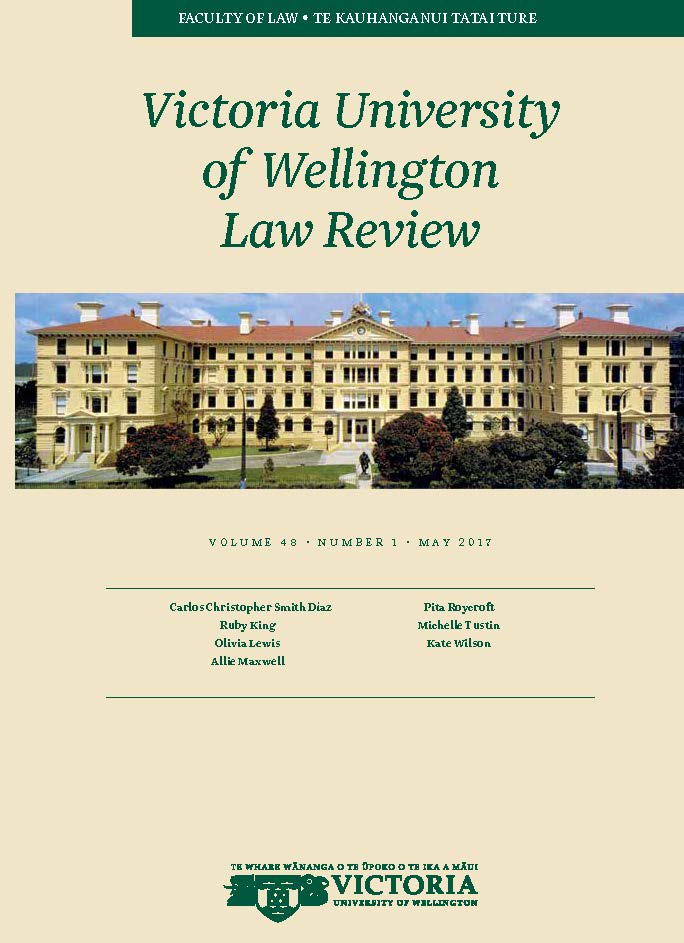The Hague Convention on the Civil Aspects of International Child Abduction 1980: The New Zealand Courts' Approach to the "Grave Risk" Exception for Victims of Domestic Violence
DOI:
https://doi.org/10.26686/vuwlr.v48i1.4768Abstract
The Hague Convention 1980 was welcomed by the international community to resolve the emerging issue of international child abduction. The Convention is premised on the assumption that all child abduction is inherently harmful. Thus, it is generally in the best interests of children to be returned to the country of habitual residence as expediently as possible, restoring the status quo.
Domestic violence victims do not fall within the typical abduction paradigm which the Convention was drafted to remedy. New Zealand courts have adopted a narrow approach to the "grave risk" defence, requiring the abducting party to prove that the country of habitual residence cannot adequately protect the child. This is rarely established due to the influence of the principle of comity. This approach therefore effectively blocks the discretionary inquiry, which only occurs once the defence is established, in which the Convention principles can be weighed against the welfare and best interests of the individual child, a consideration paramount in both domestic and international law. Domestic violence makes it unlikely that return will ever be in the child's welfare and best interests. A change in approach is suggested, under which consideration of the adequacy of the habitual residence's protection laws becomes a relevant consideration in the exercise of discretion. This ensures all considerations are given due regard and the safety of young domestic violence victims is better assured.
Downloads
Downloads
Published
How to Cite
Issue
Section
License
Authors retain copyright in their work published in the Victoria University of Wellington Law Review.


